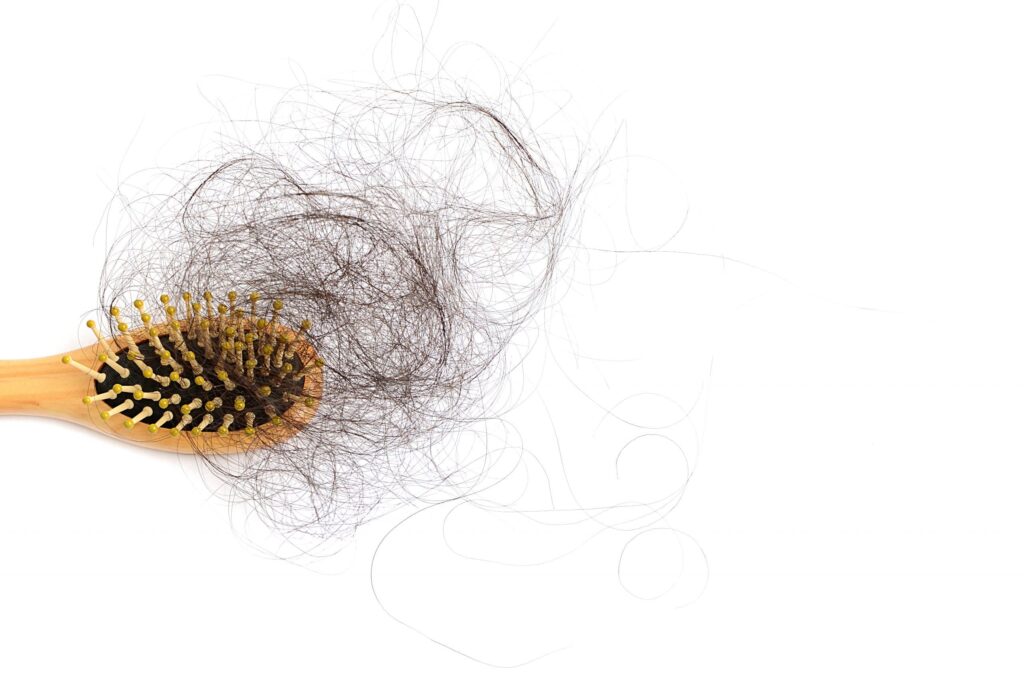
Different Types of Hair Loss – When to See a Specialist
- January 24, 2022



If you’ve noticed your hairline starting to recede or your hair beginning to thin, one of the most important steps you can take in stopping any further hair loss is getting in touch with a hair loss doctor.
Hair loss can start as early as your teens. Many men and even some women start to notice the early signs of hair loss as early as their 20s or 30s!
The point is, with hair loss, the earlier you take action and seek out professional hair loss treatment in Singapore, the more of your hair you’ll generally be able to keep.
Luckily, most cases of hair loss is treatable today! A hair loss specialist can work with you to find out what’s causing your hair loss and put together a hair loss prevention plan that helps you to minimise further loss and keep as much of your hair as possible.
In this article, we’ve listed the key benefits of talking to a hair loss doctor, as well as some signs you can look for to know when it’s time to take action and do something about your hair loss.
Androgenetic alopecia is the most common type of hair loss, affecting millions of men and women in Singapore. Commonly known as male pattern hair loss or female pattern hair loss, androgenetic alopecia is hereditary but can be managed with medication or surgery.
In men, hair loss can begin any time after puberty and progress over the course of years or decades. It starts above the temples and continues around the perimeter and the top of the head, often leaving a ring of hair along the bottom of the scalp. Many men with male pattern hair loss eventually become bald.
In women, hair slowly thins all over the scalp, but the hairline usually doesn’t recede. Many women experience this type of hair loss as a natural part of aging, although hair loss may begin any time after puberty. Female pattern hair loss can cause hair to thin dramatically, but only rarely does it lead to baldness.
Anagen effluvium is rapid hair loss resulting from medical treatment, such as chemotherapy. These potent and fast-acting medications kill cancer cells, but they may also shut down hair follicle production in the scalp and other parts of the body. After chemotherapy ends, hair usually grows back on its own.
Alopecia areata is an autoimmune condition, which means the body’s immune system attacks healthy tissues, including the hair follicles. This causes hair to fall out and prevents new hair from growing. This condition can affect adults and children, and hair loss can begin suddenly and without warning. Hair from the scalp typically falls out in small patches and is not painful. Hair in other parts of the body, including the eyebrows and eyelashes, may also fall out. Over time, this disease may lead to alopecia totalis, i.e. complete hair loss.
Telogen effluvium, a type of hair loss, occurs when large numbers of follicles on the scalp enter the resting phase of the hair growth cycle, called telogen, but the next growth phase doesn’t begin. This causes hair to fall out all over the scalp without new hair growth. Telogen effluvium does not generally lead to complete baldness, although you may lose 300 to 500 hairs per day, and hair may appear thin, especially at the crown and temples.
A medical event or condition, such as a thyroid imbalance, childbirth, surgery, or a fever, typically triggers this type of hair loss. Telogen effluvium may also occur as a result of a vitamin or mineral deficiency—iron deficiency is a common cause of hair loss in women—or the use of certain medications, such as isotretinoin, prescribed for acne, or warfarin, a blood thinner. Starting or stopping oral contraceptives (birth control pills) may also cause this type of hair loss.
The ideal time to see a hair loss doctor is as soon as you notice any of the early signs of baldness. Acting quickly can help you to stop your hair loss from worsening and keep more of your hair. The ideal time to act on hair loss can vary from one person to another. For some men, the signs of hair loss may show up in their 20s or 30s. For others, they might appear earlier. Even men in their teens can make early changes to prevent hair loss.
Also Read: Are Hair Loss Treatments In Singapore Expensive?
Below, we’ve listed some common signs that it might be time to book an appointment with a hair loss specialist.
Male pattern baldness often begins at your hairline, with the hair around your temples starting to thin and your hairline beginning to recede. If you’ve started to notice your hairline becoming thinner, higher and more M-shaped, it’s ideal to make an appointment with a doctor that specializes in hair loss.
More often than not, male or female pattern baldness is something that happens gradually. While the rate at which people lose their hair varies from person to person and is usually determined by genetics, rarely does it cause large clumps of hair to fall out.
If you’ve developed a large bald spot seemingly overnight, or if you’ve started to notice your hair falling out in large amounts (or building up on your pillow, hairbrush or in your shower drain), it’s usually a sign that you’re experiencing significant hair loss.
Sometimes, the ideal time to see a hair loss doctor is when your existing approach to preventing hair loss isn’t quite working as expected. Let’s say you’ve already noticed your hair loss. A few months ago, you started treating it using a range of non-prescription products, including minoxidil and a hair loss shampoo that contains an active ingredient such as ketoconazole.
If your hair loss treatment program isn’t working as well as you’d hoped for, it could be because you’re missing something important.
As hair loss becomes more severe, it also becomes more noticeable. The more severe your hair loss gets, the more challenging it becomes to treat, as fewer hair follicles are left to protect. Because of this, it’s always ideal to take action as soon as possible.
The ideal day to start preventing or treating your hair loss is today. If you’re self-conscious about the condition of your hair and scalp, we’re here to help, regardless of whether it’s through hair loss medication such as oral minoxidil, finasteride, or hair transplants.
With our panel of medically-trained and certified doctors recognised by the Singapore Medical Council’s Aesthetic Practice Oversight Committee (APOC), you’re in safe and able hands to start your hair loss treatment journey!
Walk-in or call us at +65 9850 71112 to start your journey to the hair you desire and deserve!
Like what you read? Share them!